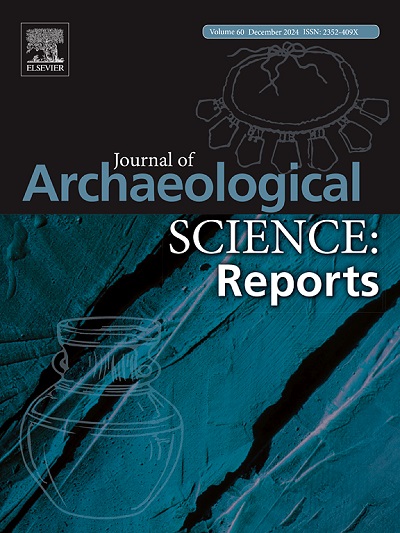Bronze Age agropastoral management in central Cyprus and along the Jordan Rift
IF 1.5
2区 历史学
0 ARCHAEOLOGY
引用次数: 0
Abstract
We compare ancient landscapes and agropastoral management in a variety of environmental settings in the Eastern Mediterranean. Agropastoral practices are inferred across Early and Middle Bronze Age landscapes based on evidence excavated from four rural settlements in the northern Jordan Valley (Tell el-Hayyat, Tell Abu en-Ni‘aj), the Dead Sea Basin (Zahrat adh-Dhra‘ 1), and the Troodos foothills of Cyprus (Politiko-Troullia). Comparative analyses using AMS dating, carbonized seed to charcoal ratios, charcoal, seed and bone frequencies, and stable isotope ratios (δ15N and δ13C) from seeds and animal bone collagen enable discussion of contrasting natural and agrarian landscapes. Villages in the Jordan Valley burned dung fuel along with wood from riparian trees, while wood from desert trees was utilized near the Dead Sea, and pine, oak, and olive trees provided fuel in central Cyprus. Bone assemblages reveal animal husbandry based on high frequencies of sheep and goats, supplemented by domestic pigs at Tell el-Hayyat and Tell Abu en-Ni‘aj. Politiko-Troullia is distinguished by the hunting of deer and feral pigs as inferred from stable isotope analysis of bone collagen. Plant cultivation strategies are inferred from δ15N and δ13C, which have similar values for cereals and pulses at Tell el-Hayyat and Tell Abu en-Ni‘aj despite different environmental conditions and societal contexts. Values of δ15N and δ13C from barley and wheat at Zahrat adh-Dhra‘ 1 suggest the greatest amount of management (irrigation and manuring), while plant cultivation at Politiko-Troullia involved olive arboriculture and little management of cereals. Ancient plants and animals illuminate the herding, hunting, and cultivation practices that helped mold ancient Eastern Mediterranean landscapes, often in response to environmental stress.
求助全文
约1分钟内获得全文
求助全文
来源期刊

Journal of Archaeological Science-Reports
ARCHAEOLOGY-
CiteScore
3.10
自引率
12.50%
发文量
405
期刊介绍:
Journal of Archaeological Science: Reports is aimed at archaeologists and scientists engaged with the application of scientific techniques and methodologies to all areas of archaeology. The journal focuses on the results of the application of scientific methods to archaeological problems and debates. It will provide a forum for reviews and scientific debate of issues in scientific archaeology and their impact in the wider subject. Journal of Archaeological Science: Reports will publish papers of excellent archaeological science, with regional or wider interest. This will include case studies, reviews and short papers where an established scientific technique sheds light on archaeological questions and debates.
 求助内容:
求助内容: 应助结果提醒方式:
应助结果提醒方式:


